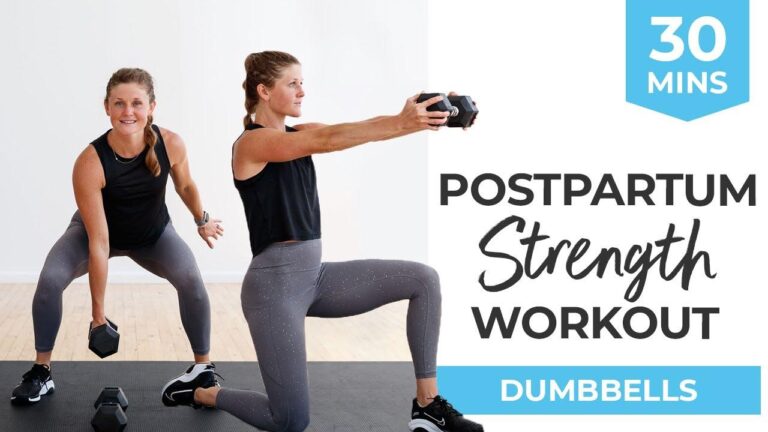Welcoming a new baby into your life is an amazing journey filled with joy, challenges, and countless adjustments.Amidst the sleepless nights and endless diaper changes, it’s easy to put your own well-being on the back burner. However, postnatal fitness is an essential step not just for reclaiming your strength, but for boosting your energy, improving your mood, and supporting overall health as you navigate motherhood. In this article, we’ll explore effective and safe strategies for postnatal fitness training—helping new moms build strength, regain confidence, and feel their best after baby. Whether you’re just starting out or ready to take your workouts to the next level, this guide will empower you on your postpartum fitness journey.
Table of Contents
- Understanding Your Postnatal Body and Its Needs
- safe Exercises to Rebuild core Strength and Stability
- incorporating Cardio for Endurance Without Overexertion
- Balancing Fitness Goals with Newborn Care and Recovery
- Insights and Conclusions
Understanding Your Postnatal Body and Its needs
After giving birth, your body embarks on a remarkable journey of recovery and transformation. Hormonal shifts, changes in muscle tone, and the adaptation of organs like the uterus create a foundation that’s quite different from what you might expect pre-pregnancy. It’s crucial to recognize that patience and gentle care are essential during this phase. Ignoring thes changes or rushing back into intense workouts can led to setbacks such as diastasis recti, pelvic floor dysfunction, or chronic fatigue.
To effectively support your body’s healing and rebuilding process, prioritize activities that align with its specific needs:
- Rebuild core strength: Focus on exercises that safely engage and repair the deep abdominal muscles.
- Restore pelvic floor health: Incorporate mindful pelvic floor exercises to regain control and stability.
- Promote mobility: gentle stretches and movements to enhance flexibility and reduce muscle tension.
- Listen to your body: Honor fatigue and discomfort, adjusting intensity accordingly.
Embracing this thoughtful approach ensures your fitness journey after baby is not only effective but also sustainable and empowering.
Safe Exercises to rebuild Core Strength and Stability
Rebuilding core strength after pregnancy requires gentle, deliberate movements that focus on reconnecting with your body’s deep muscles. Begin with exercises like pelvic tilts to engage the transverse abdominis without straining. These movements help restore pelvic alignment and alleviate lower back tension. Incorporating deep belly breaths during the exercises enhances activation of the core stabilizers while promoting relaxation of the pelvic floor. it’s essential to progress slowly,paying attention to any discomfort or signs of diastasis recti,and modifying your routine accordingly.
Once you feel agreeable with foundational exercises, you can introduce controlled dynamic movements such as modified planks and bird-dogs. Both promote stability by recruiting multiple core muscles together, encouraging balance and coordination. Aim for quality over quantity—holding positions with proper form is more beneficial than rushing repetitions. Complement your routine with gentle stretches and pelvic floor exercises to support overall stability and postural health during your postnatal recovery journey.
Incorporating Cardio for Endurance Without Overexertion
Finding the balance between building endurance and respecting your body’s current state is key to sustainable postnatal fitness. Start with low-impact cardio exercises such as brisk walking, swimming, or stationary cycling. These activities increase your heart rate gently,helping to improve cardiovascular health without placing undue stress on healing muscles and joints. Aim for shorter sessions initially—around 10-15 minutes—and gradually increase duration and intensity as your strength and stamina improve.
Tips for effective postnatal cardio:
- Listen closely to your body—avoid pushing through pain or extreme fatigue.
- Focus on consistency rather than intensity, aiming for 3-4 sessions per week.
- Incorporate breathing exercises to enhance oxygen flow and promote relaxation.
- Stay hydrated and wear supportive footwear to protect your joints.
- Combine cardio with gentle strength training to build a well-rounded fitness foundation.
Balancing Fitness Goals with Newborn Care and Recovery
Finding equilibrium between fitness aspirations and the demands of newborn care requires both patience and strategic planning. Prioritizing your recovery is essential—trust your body’s signals and avoid rushing into intense routines prematurely. Incorporate gentle movements and stretches that promote healing, while acknowledging that progress might be gradual. Flexibility in your schedule can be a game-changer; short,focused sessions spread throughout the day often work better than long workouts. Remember, quality and consistency outweigh quantity during this sensitive time.
To maintain motivation without overwhelming yourself, consider small, realistic goals integrated with daily parenting tasks. Such as,doing pelvic floor exercises during diaper changes or practicing mindful breathing while rocking your baby can seamlessly blend recovery with caregiving. Keep these supportive habits in mind:
- Listen to your body: Rest when needed and adjust intensity accordingly.
- Stay hydrated and nourished: Proper nutrition fuels both recovery and energy levels.
- Utilize your support system: Allow partners or family to assist so you can have focused workout time.
- Celebrate small victories: Whether it’s holding a plank for an extra second or simply feeling less fatigued.
Insights and Conclusions
Reclaiming your strength after baby is a journey—one that deserves patience,care,and informed guidance. Postnatal fitness training is not just about getting back in shape; it’s about rebuilding your foundation, boosting your confidence, and nurturing your wellbeing during this incredible transition. Remember, every small step forward is a victory.Whether you’re easing into gentle movements or diving into more structured workouts, listen to your body, celebrate progress, and, when in doubt, seek support from professionals who understand the unique needs of postpartum recovery. Here’s to embracing strength, health, and vitality—one day at a time.

